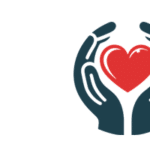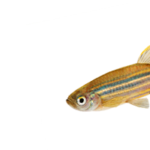Overview
Although animal research is central to advances in biomedical research, the social sciences, and other forms of knowledge that advance human welfare and health, the toll of maintaining and using animals for such endeavors remains an under-discussed topic with an under-appreciated impact. Personnel who engage with animals used in research range from staff who provide the animals with daily care (for example, feeding and cleaning cages) to researchers who use them in studies to staff veterinarians who oversee protocols and provide healthcare when needed. Any of these individuals may form bonds with their non-human subjects, which can lead to compassion fatigue [1]. This article discusses compassion fatigue, its signs, and approaches that individuals and institutions can use to provide support as a way to ameliorate its effects.
What is Compassion Fatigue?
Animal research personnel engage in a cycle of interactions with non-human animal subjects, which may lead to an emotional attachment. Given the nature of animal research, these same animals may then be subjected to procedures, which, even with protocols that have been reviewed and approved by an IACUC, may cause them physical or emotional distress, pain, and/or lead to their death via euthanasia [1]. This cycle has been dubbed the “caring-killing paradox” [2], which can lead to a phenomenon known as “compassion fatigue”. Research animals, like all animals, may also develop natural disease. This can be the natural consequence of aging (e.g. nonhuman primates) and longstanding associations of personnel with such animals can also lead to compassion fatigue when such animals become ill or are euthanized. Although compassion fatigue has several different definitions that have been used in the literature, we will refer to it here as “a profound state of mental and physical exhaustion caused by wanting to help those who are suffering.” [3]. Surveys of individuals who work with animals in research settings suggest that as many as nine out of ten have experienced compassion fatigue at some point during their career [4].
Impacts of Compassion Fatigue on Individuals and Institutions
Compassion fatigue can manifest in a variety of ways, though all of the symptoms result in “a reduced quality of life and is associated with loss of empathy, isolation, dissociation, substance abuse, physical ailments, trouble sleeping, and feelings of anger and sadness.” [3] In addition to causing personal distress to employees, these symptoms have a negative impact on research and animal care operations as increases in compassion fatigue are associated with lower levels of job satisfaction [5], which in turn can lead to higher levels of employee turnover [6].
Individual Strategies for Managing Compassion Fatigue
Individuals who work with animals in research settings need to be made aware of the signs and impacts of compassion fatigue so that they can take appropriate action. Recognizing the symptoms is a critical first step toward management and amelioration. Although there is a paucity of large-scale randomized controlled studies of interventions for compassion fatigue in animal research personnel, qualitative studies and an examination of strategies shown to work with individuals in other helping professions, such as nurses and social workers, indicate that individuals should be sure to engage in self-care activities outside of work such as exercising, maintaining a proper diet, and engaging in leisure activities that they find to be recharging. Although relying on social support, such as talking with a trusted individual about compassion fatigue, has been shown to be efficacious [3], it is critical that individuals who might be engaged in this regard understand what animal research entails and are able to provide help without any hint of moral or ethical judgment. Along those lines, adopting a pet or companion animal for the home may also provide a good outlet for workers [3]. Finally, although it is only anecdotal, some researchers who specialize in this area suggest it may be beneficial to encourage staff to acknowledge their relationships with animal subjects rather than trying to minimize their interactions, in what has been described as “doubling down” on empathy rather than shying away from it [7].
Institutional Approaches to Reducing Compassion Fatigue
In addition to the individual strategies described above, institutions must clearly acknowledge that compassion fatigue deserves consideration. It is critical that institutions employ interventions aimed at both decreasing compassion fatigue and nurturing resiliency in animal research personnel [8]. Some methods that can be used are:
- Conduct a formal needs assessment [9] or survey that allows for personalization of interventions [11] to meet the needs of each organization.
- Ensure transparency and communication, for example, by clearly identifying impending euthanasia dates of animal subjects so that all staff are aware of events that may challenge them emotionally [7]
- Collaborate with mental health or other counseling staff to create a compassion fatigue outreach program or implement some other psychoeducational intervention [10].
- Create a culture that introduces opportunities for novelty and where there is positive acknowledgment and reinforcement of the contributions of animal welfare staff [11].
- Additional Resources for Support
- Two sources for additional support for individuals and institutions are:
- The University of Washington’s Dare 2 Care initiative, which was initiated to help combat compassion fatigue for personnel working with populations of research animals.
- The 3Rs Collaborative’s 3Rs Certificate Course on the rationale behind and ways to 1) replace the usage of animals in research, 2) reduce the number of animals needed for research studies, and 3) refine the methods and protocols used the minimize pain and suffering (i.e., the 3Rs of animal research)
Summary
Compassion fatigue is a pervasive phenomenon that is not broadly discussed. The impacts of working with animals who are subjected to circumstances, including euthanasia, outside their control must be acknowledged by organizations and institutions so that open discussion may take place and the needs of staff may be identified. Through an approach that includes both institutional and individual interventions, resiliency among animal research personnel may be nurtured and negative outcomes for both may be mitigated.
References
1. LaFollette, Megan R., Megan C. Riley, Sylvie Cloutier, Colleen M. Brady, Marguerite E. O’Haire, and Brianna N. Gaskill. 2020. “Laboratory animal welfare meets human welfare: A cross-sectional study of professional quality of life, including compassion fatigue in laboratory animal personnel.” Frontiers in Veterinary Science 7:114.
2.Reeve, Charlie L., Steven G. Rogelberg, Christiane Spitzmüller, and Natalie DiGiacomo. 2005. “The caring‐killing paradox: Euthanasia‐related strain among animal‐shelter workers 1.” Journal of Applied Social Psychology 35(1):119-43.
3. Randall, Michaela S., Carly M. Moody, and Patricia V. Turner. 2021. “Mental Wellbeing in Laboratory Animal Professionals: A Cross-Sectional Study of Compassion Fatigue, Contributing Factors, and Coping Mechanisms.” Journal of the American Association for Laboratory Animal Science: JAALAS 60(1):54.
4. Thurston, Sarah E., Goldia Chan, Lisa A. Burlingame, Jennifer A. Jones, Patrick A. Lester, and Tara L. Martin. 2021. “Compassion fatigue in laboratory animal personnel during the COVID-19 pandemic.” Journal of the American Association for Laboratory Animal Science: JAALAS 60(6):646-54.
5. Young, Lauren, Fabienne Ferrara, Lisa Kelly, Tara Martin, Sally Thompson-Iritani, and Megan R. LaFollette. 2024. “Professional quality of life in animal research personnel is linked to retention & job satisfaction: A mixed-methods cross-sectional survey on compassion fatigue in the USA.” PLoS One 19(4):e0298744.
6. Scotney, Rebekah L., Deirdre McLaughlin, and Helen L. Keates. 2015. “A systematic review of the effects of euthanasia and occupational stress in personnel working with animals in animal shelters, veterinary clinics, and biomedical research facilities.” Journal of the American Veterinary Medical Association 247(10):1121-30.
7. Grimm, David. 2023. “Suffering in Silence.” Science 379(6636):974.
8. Van Hooser, J. Preston, Cynthia Pekow, Holly M. Nguyen, Dominic M. D’Urso, Sara E. Kerner, and Sally Thompson-Iritani. 2021. “Caring for the animal caregiver—occupational health, human-animal bond and compassion fatigue.” Frontiers in Veterinary Science 8:731003.
9. Murray, Judy, Cassondra Bauer, Nicole Vilminot, and Patricia V. Turner. 2020. “Strengthening workplace well-being in research animal facilities.” Frontiers in Veterinary Science 7:573106.
10. Rohlf, Vanessa I. 2018. “Interventions for occupational stress and compassion fatigue in animal care professionals—A systematic review.” Traumatology 24(3):186.
11. Pavan, Andreanna D., Jeanette O’Quin, Megan E. Roberts, and Carrie L. Freed. 2020. “Using a Staff Survey to Customize Burnout and Compassion Fatigue Mitigation Recommendations in a Lab Animal Facility.” Journal of the American Association for Laboratory Animal Science: JAALAS 59(2):139.






